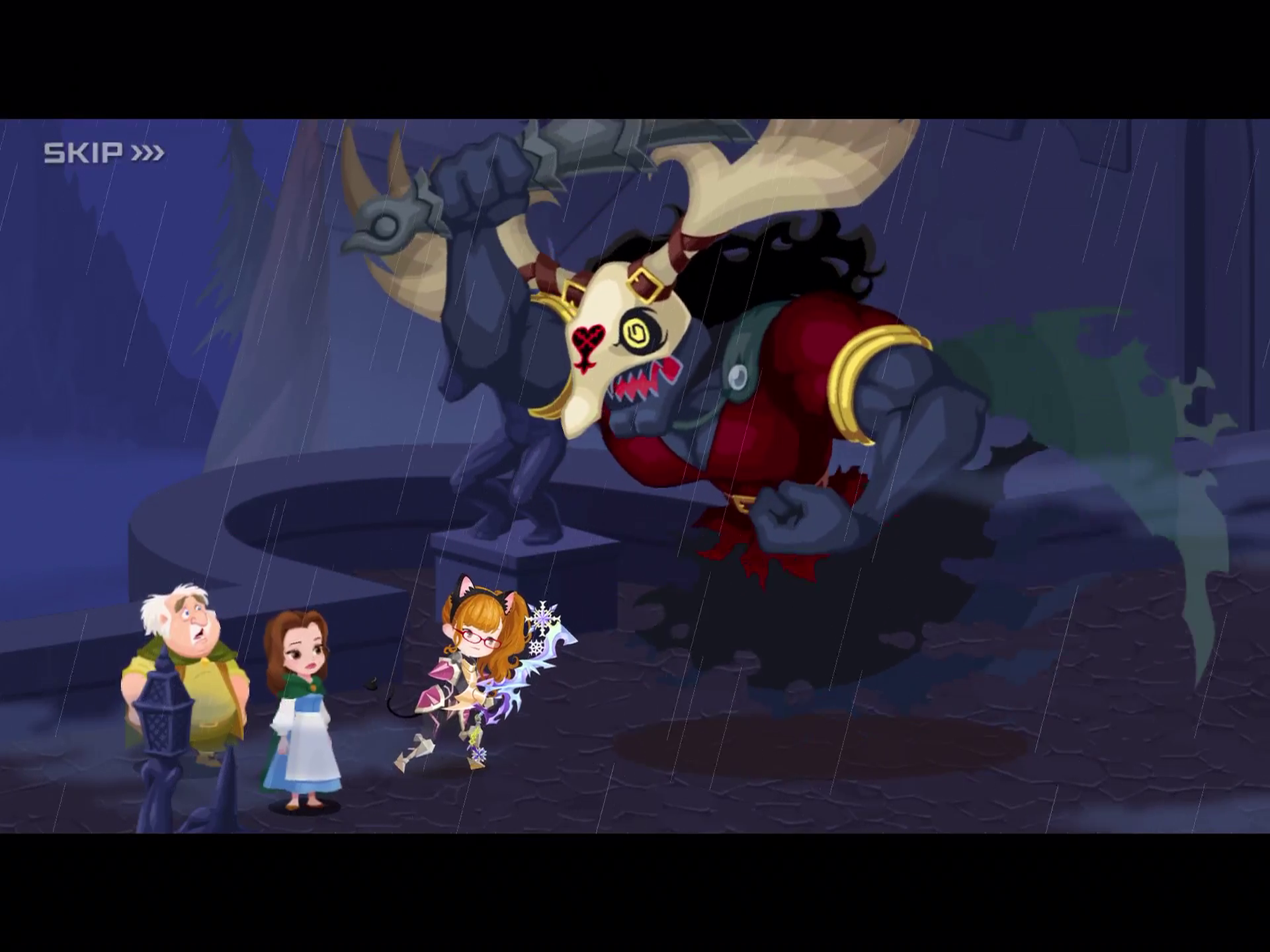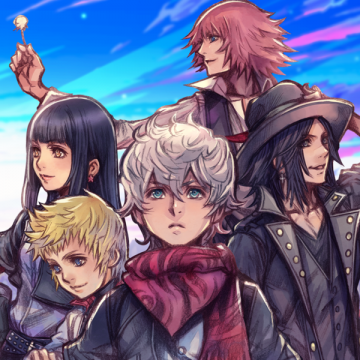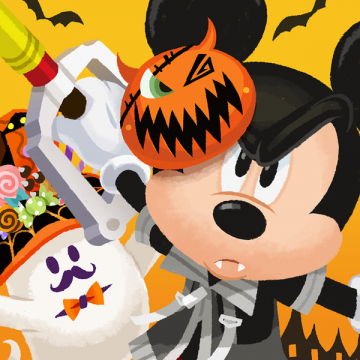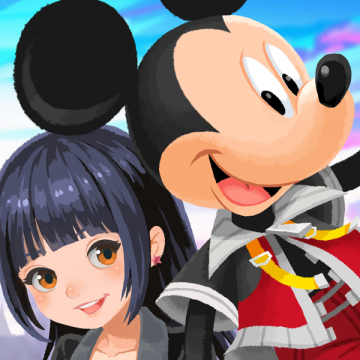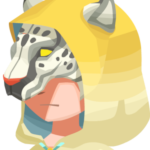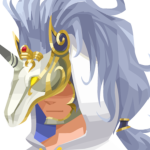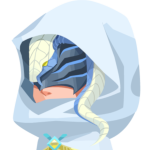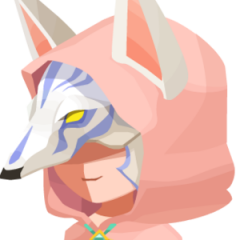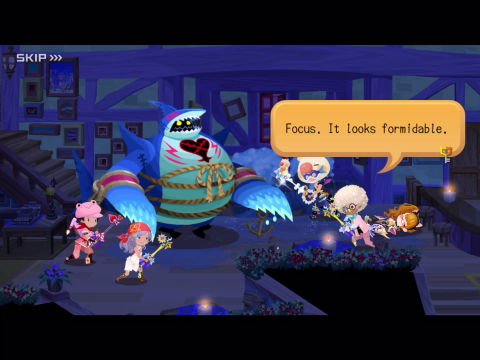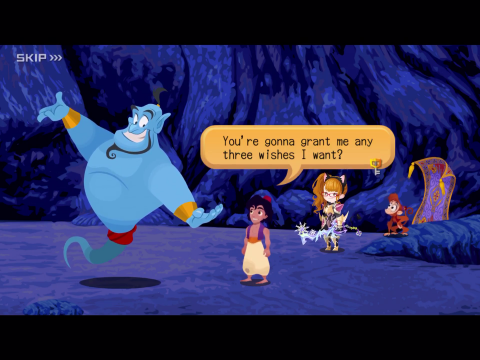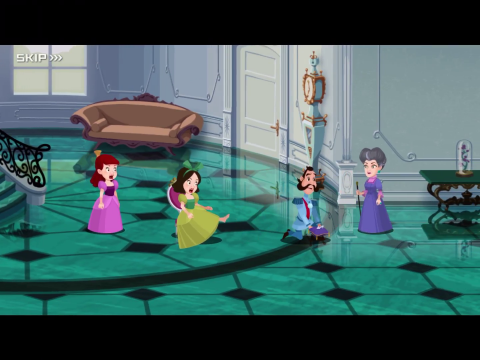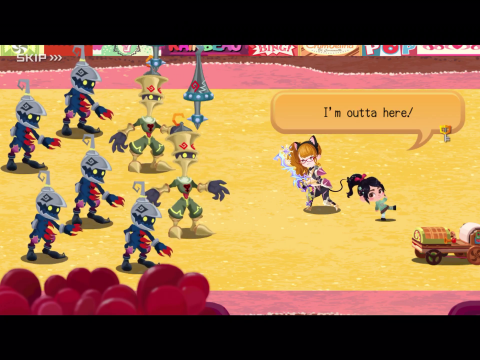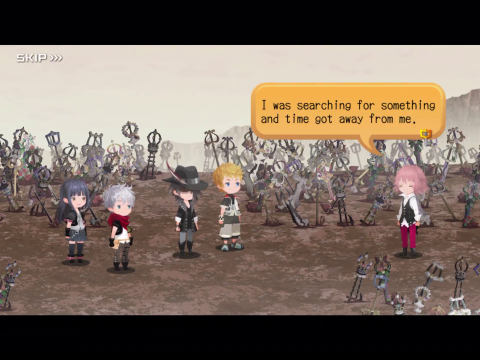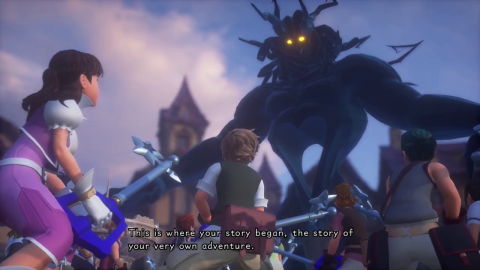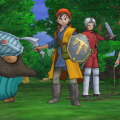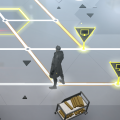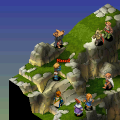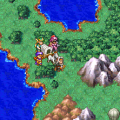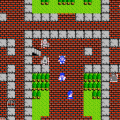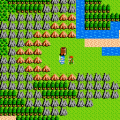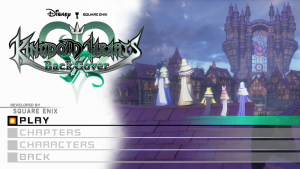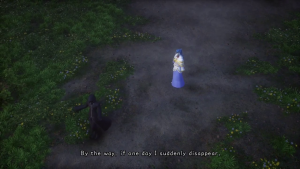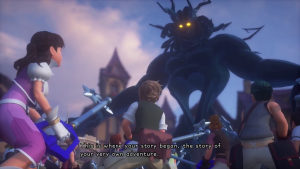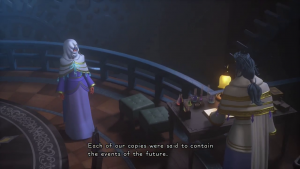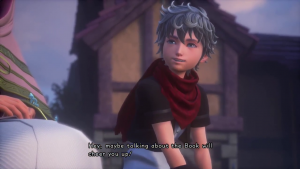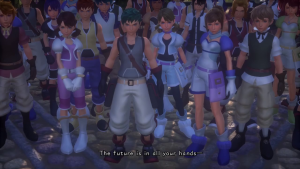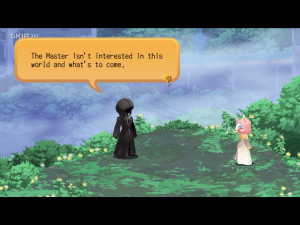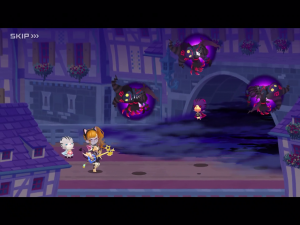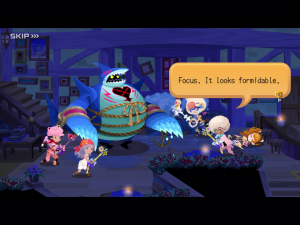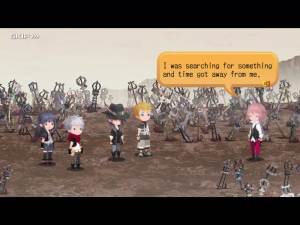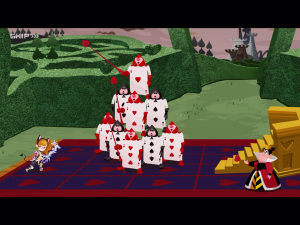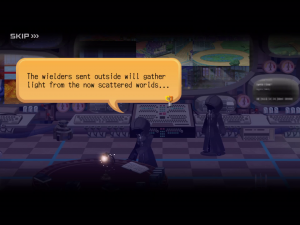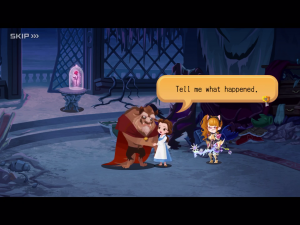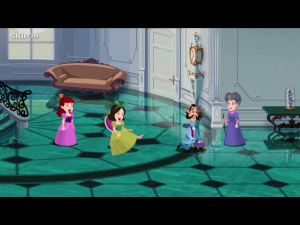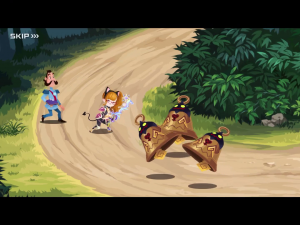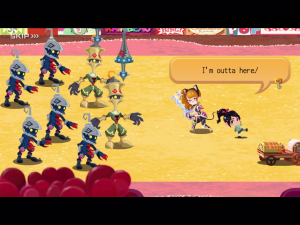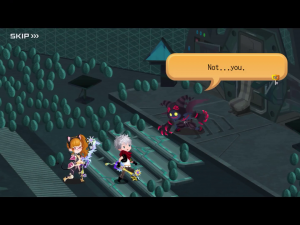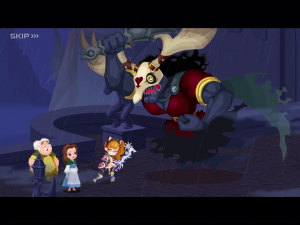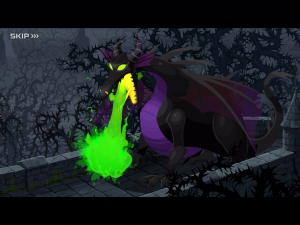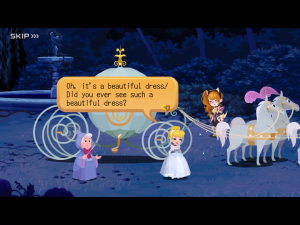- Kingdom Hearts
- Kingdom Hearts: Chain of Memories
- Kingdom Hearts II
- Kingdom Hearts: 358/2 Days
- Kingdom Hearts: Birth By Sleep
- Kingdom Hearts Re:coded
- Kingdom Hearts: Dream Drop Distance
- Kingdom Hearts χ
- Kingdom Hearts 0.2 Birth By Sleep
- Kingdom Hearts III
- Kingdom Hearts: Melody of Memory
- Kingdom Hearts (Miscellaneous)
Kingdom Hearts χ was the series’ second social game, after whatever the heck Kingdom Hearts Mobile was supposed to be. The umbrella label covers four separate iterations with fives eparate titles, most of them defunct. In short, the narrative is about an oft-repeated story in Kingdom Hearts lore: the “age of fairy tales,” when everything was great until people began to fight over “the light,” leading to the utter destruction of the world, before being reborn into the form we know today. In other words, players were signing up to play on a sinking ship from the start! But the exact form of their inevitable demise would be just as complicated and weird as Kingdom Hearts fans had come to expect.
Characters
The Master of Masters
A man who can see the future, the master has put his disciples in charge and then vanished. Far from the aged sage you’d expect, the master is energetic, erratic and quirky, and his instructions strangely insidious.
Foretellers
Ira, Invi, Aced, Gula, and Ava, each named for one of the Seven Deadly Sins. Each has a role to play in the Master’s plan, some contradictory, as if designed to incite infighting. Between loyalty and humanity, they seemed doomed to fail, but each has their own path to damnation.
Luxu
The Master’s final apprentice, named after luxuria, Lust, but also the “Lux” that makes up an important part of the game’s setting. His job is to abandon the others and simply watch from a distance, but to what purpose, even he can’t really say.
Dandelions
The new faction that takes over in the game’s second arc, led by Ephemer, Skuld, Brain, and two other characters better kept secret. Not so bound to the Master of Masters, they begin to question his irrational orders, and find more than they bargained for.
Chirithy
Every one of the Keyblade wielders involved in this fiasco, including the player, are accompanied by an identical cat named Chirithy. While the original games made a twist out of this, Back Cover reveals right from the off that Chirithy are Spirit Dream Eaters.
The Kingdom Hearts χ game was a Japanese exclusive, created for browsers using Flash and developed by SUCCESS corporation. The game makes use of a vector character graphics style originally created in Kingdom Hearts Mobile, and later developed in Square’s Theaterhythm series. Some fans have also noted a visual similarity to Smile-Lab’s Nicotto Town, another browser game, which crossed over with the original Kingdom Hearts χ during its lifetime.
Kingdom Hearts χ begins with the player, a Keyblade wielder, choosing one of five factions. That faction’s leader eggs the player to collect the light in the form of “Lux,” earned by battling the Heartless, who by all rights shouldn’t be in this time period, at least not in this form. The mysteries continue to mount as the plot goes on, and the original browser game ended with the climactic, inter-factional Keyblade War mentioned in many of the previous games.
The browser game saw the player adventuring across multiple Disney worlds, all return worlds from previous games. The new 2D, vector backgrounds are gorgeous renderings of the original films, and the puppet-style characters used by the game are cute and articulate, if maybe a little mismatched with the backgrounds. It all makes these old locations feel fresh and new, even if the plots are starting to sag under the weight of so many return trips. The Heartless, while narratively confounding, are just delightful, and the teams’ artists were frequently called on to create dozens of new breeds, after so many years of copy-and-paste.
The mobile game’s central gameplay loop involved navigating the worlds to follow the story, just like any other Kingdom Hearts games. Of course, like any social MMO, most of your time was spent doing repetitive tasks like daily hunts while you waited for new updates. Every combat would cost you AP from a slowly-regenerating pool (a pool that got larger as you got stronger), but starting about mid-way through the game’s life, the developers made the drastic, user-friendly decision to reduce all story battles to cost only 1 AP, and you could wait as long as necessary. Since continuing a fight after you die only forced you to pay the 1 AP entrance fee again, this gave the player infinite lives to complete the storyline, essentially giving everyone access to the entire storyline for free instead of locking it behind a paywall or a grind-wall! This was great in a narrative-friendly audience like Kingdom Hearts, and it’s a shame they never did the same on mobile, which charged “Gems” (more-or-less real money) to continue a fight.
In addition to AP, the player also got five points of BP that regenerate at a slower rate. These could be used to fight giant Raid Bosses alongside the rest of your thirty-member team (be it organized or randomized). You only had a few real-world minutes to beat the boss, but your clan’s damage was combined. Each boss you cleared within the week makes the next boss stronger, and its rewards richer, but failing did the reverse. At the time, English-language players tended to cluster to small set of a clans to have any hope of keeping up in the rankings, and to their credit, those few organized clans did okay for themselves!
Combat in Kingdom Hearts χ revolved around special, cards decked out with Kingdom Hearts characters, each tied to a different attack animation. Each attack card was marked with one of three colors, Power (red), Speed (green) and Magic (blue). During battle, your nine equipped cards were shuffled and dealt out in hands of three, only going back into the deck after all nine cards are used up on the third round. Each Keyblade gave an attack bonus if the cards landed in specific slots: the starting Starlight Keyblade, for example, would boost Power in the first slot, Magic in the second and Speed in the third. Later in the game’s life, Dark cards, featuring villains, would also get special bonuses in specific plays. It all came down to basic statistics and trusting the rest to luck. The player also received a strength bonus from something ominously-named “Guilt,” which accumulated by beating foes each week, and encouraged regular play.
Of course, all of this happened via a gatcha draw system, and cards had to be upgraded by feeding them weaker cards. The game was user-friendly enough that storyline rewards could probably get you through the story itself, but serious play meant routine play or shelling out real money.
Kingdom Hearts χ was eventually shut down to make way for the mobile game, which initially repeated the browser game’s story arc and was titled “Kingdom Hearts: Unchained χ“. Once it was time to move on to the new, Dandelions story arc, the game changed name to “Kingdom Hearts: Union χ” to mark the second season (deliberately keeping the acronym “KHUX”), but don’t let the title mislead you: the game was exactly the same.
The biggest change with the mobile version is that, instead of being allowed to free-roam through the game worlds, the player can only interact with the worlds via missions, each of which feature a limited stretch of rooms from the overall world. Beyond being less immersive, the only way to keep up the daily grind is to repeat old missions, shooting for three challenges assigned to each in exchange for rewards. Raid Bosses make a return, but the mechanics are different and they could even stop you from playing a mission until a timer ran out, or your clan cleared them out! Late in the game’s life, the game added a few challenge modes, and even a PvP mode.
In combat, a player can fight multiple opponents, so whenever they play their gatcha medals (which replace the cards), they had to decide whether to attack by tapping on an enemy to deal the full damage to a single target, or to slide their finger across the screen to deal reduced damage to the entire group. Like in the original game, your Keyblade gives benefits to certain colored attacks in certain slots, but you have full control over the order you play each medal. You also get to assign a medal borrowed from a friend, which features them popping into the game to assist you! Later updates added a pet system inspired by Kingdom Hearts Mobile, where your animal buddy would throw in their two cents. After so many fireworks, the enemy’s simplistic counterattack can look a little pithy, even if it one-shots you, as it frequently did!
Where progression in the original Kingdom Hearts χ was a traditional level-up and gatcha-fusion affair, the smartphone game also features a set of “avatar boards” to guide progression. These boards, structured like the ability trees in Dream Drop Distance, awarded cosmetic prizes, but also upgrades. So an avatar board based on Jafar from Aladdin would give you several Jafar-inspired clothes and hairstyles, but also some Jafar-esque stat upgrades (magic, speed) and medals based on other magical Disney characters. Some avatar boards were premium exclusives, which meant not only exclusive cosmetics, but exclusive stat upgrades, but there were so many boards in total that you might not have ever noticed. In fact, for all the game may have done to warrant a reputation as a pay-to-win game (especially by fans of the story who were annoyed at the paywall), it was possible to win without paying a cent, and there are even speed runs that were able to beat the entire game, Free to Play, inside of a single day! But that was definitely for experts, not frustrated fans uninterested in this mobile experiment.
The smartphone game got even more experimental on June 2020, where it added a second game to the app called Kingdom Hearts: Dark Road. Set during Young Xehanort’s day, the story sees him, Eraqus, and their fellow pupils on the hunt for several senior apprentices gone missing in the Disney morass. While the player can control Xehanort directly, the game actually belongs to the Idle RPG genre, and you can and should leave him to work on his own except during bosses. Each gatcha card (yes, they’re cards again) has an upgrade path that boosts Xehanort’s stats as well. In the rare instances where you actually bother to control Xehanort, you have a few tactical options to jazz things up and make boss battles feel more engaging.
Dark Road was an unusual experiment, which would actually outlast the main game. The game was shut down in June 2021, its story complete, but Dark Road‘s not. It was eventually replaced by an offline app with a cutscene viewer for the main game (no gameplay), and Dark Road as a completed, offline game. At the time of writing, the offline Dark Road remains unreleased, and may include changes not found in the online version.
In addition to the main game, Square Enix attempted to make the game’s story more accessible by creating a film, Kingdom Hearts χ: Back Cover, attached to the Kingdom Hearts 2.8 HD collection. Unlike the 358/2 Days and coded “films,” this is a genuine, entirely new movie, with unique 3D assets, voice acting and a proper film’s structure instead of a weird, cutscene gallery Frankenstein. It only covers the events of the original browser storyline, and introduced several new story elements in the process. Unlike some of Square’s previous efforts, like Final Fantasy VII: Advent Children, the film was never intended for general audiences and makes no attempts to be anything other than the nth entry in a long-running, complicated franchise, which was probably for the best. Fans will enjoy the hints at future events, though assumptions that the story would help you understand the then-upcoming Kingdom Hearts 3 have proven mostly spurious: Kingdom Hearts 3 has almost nothing to do with the mobile game. That would be saved for later titles.
